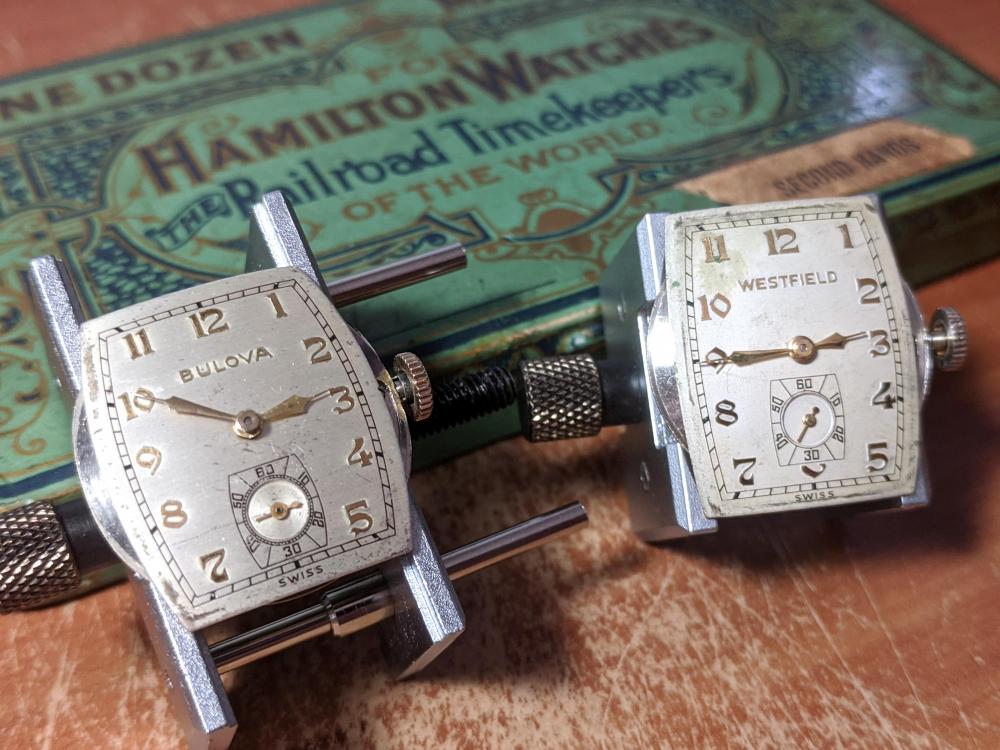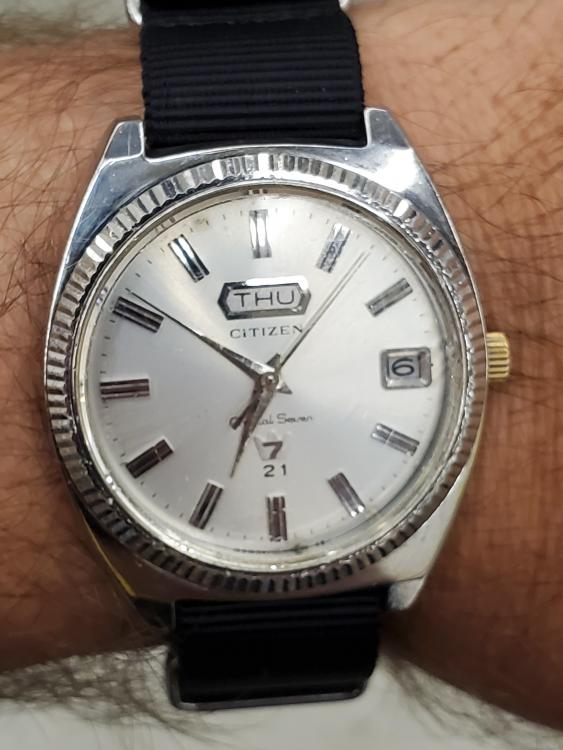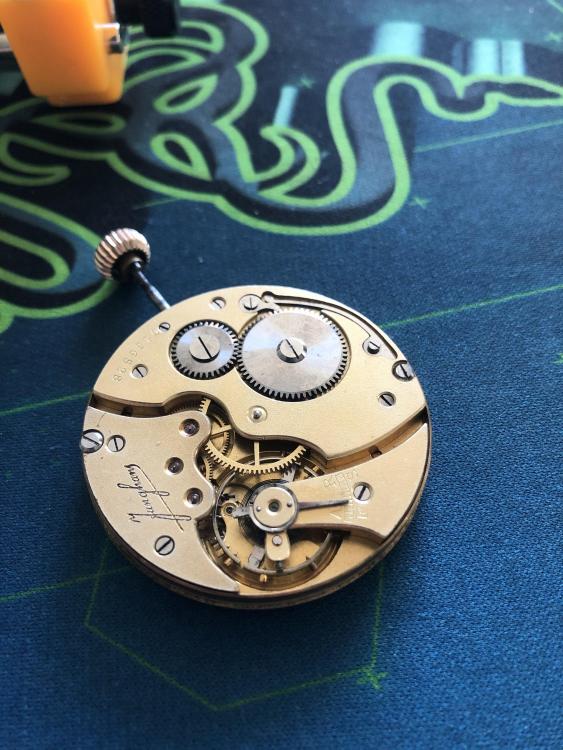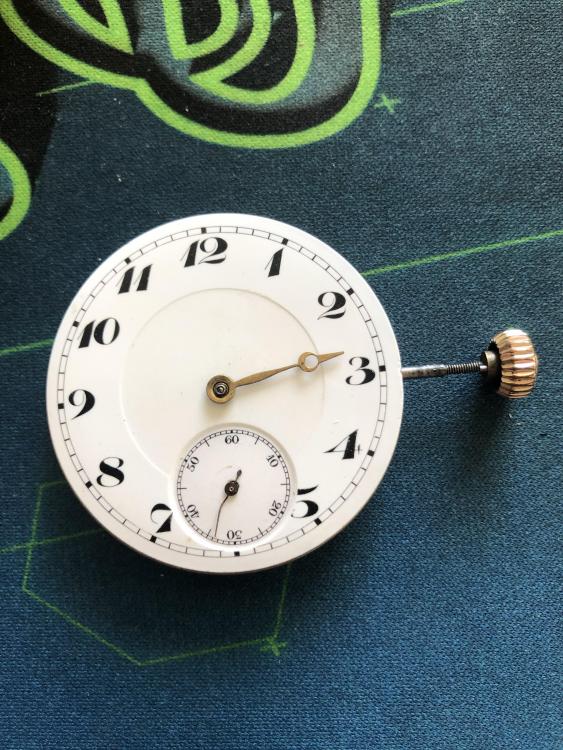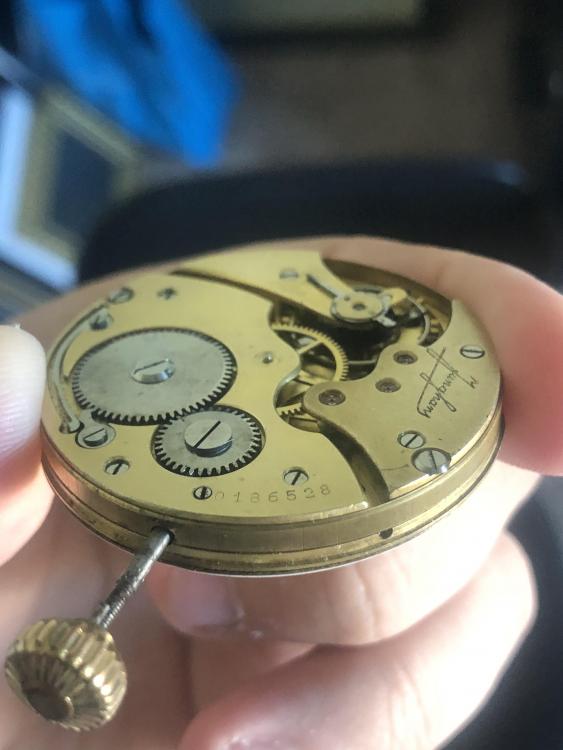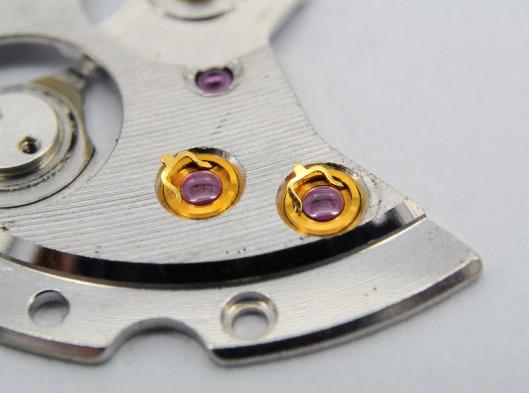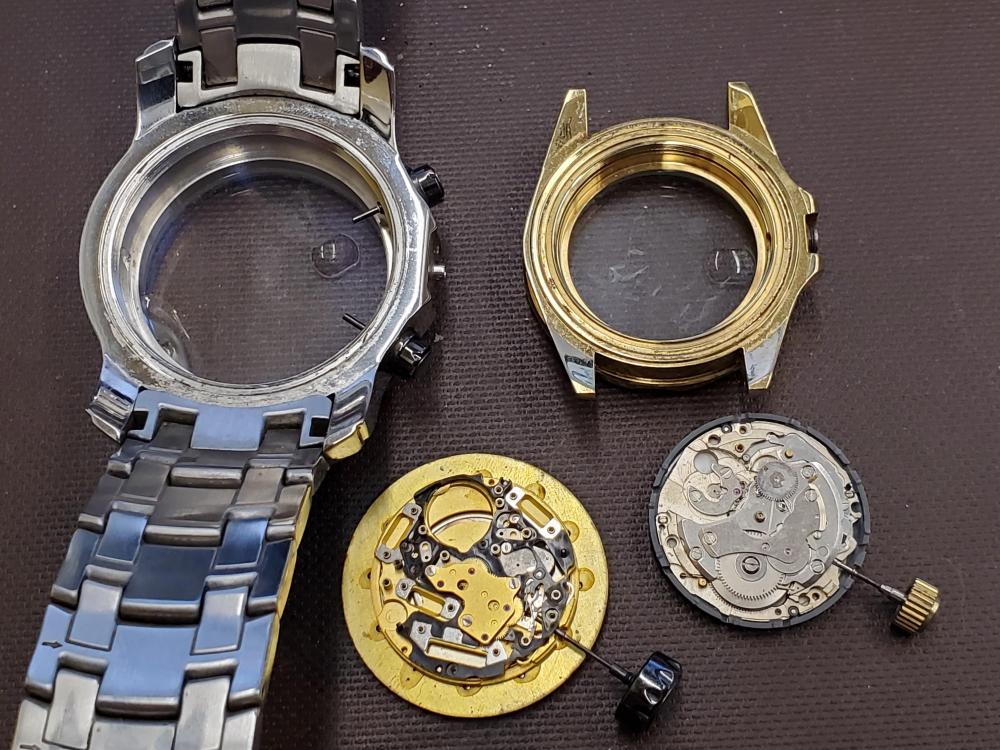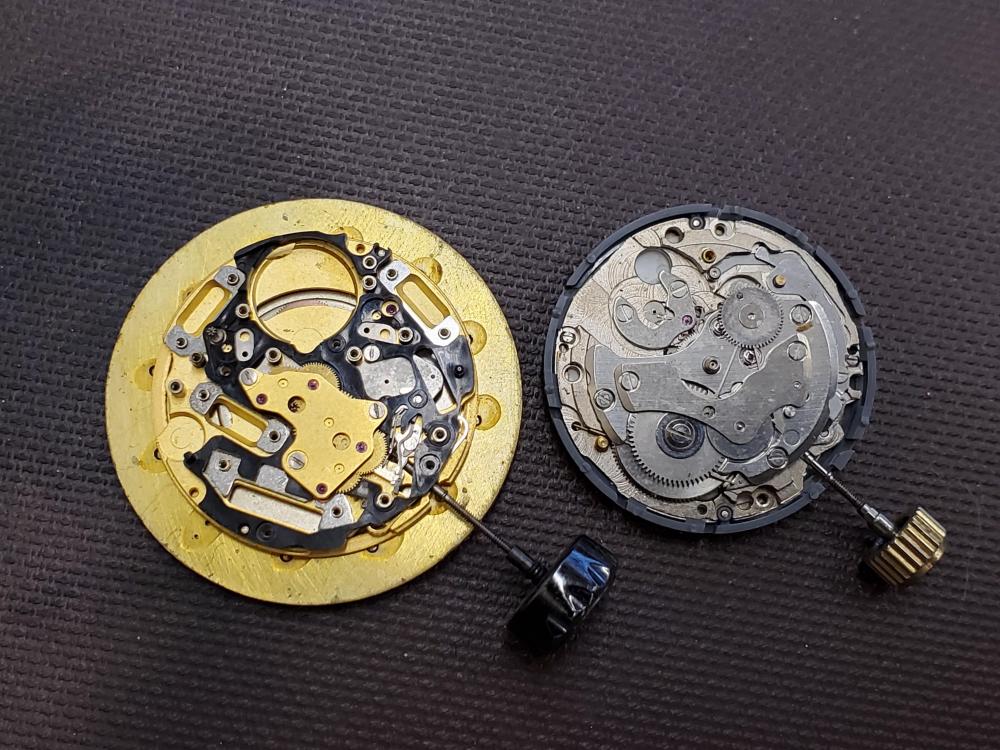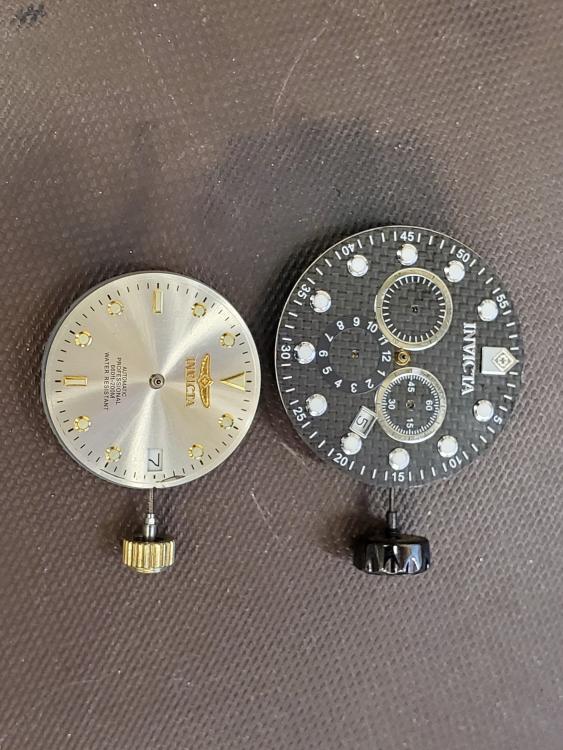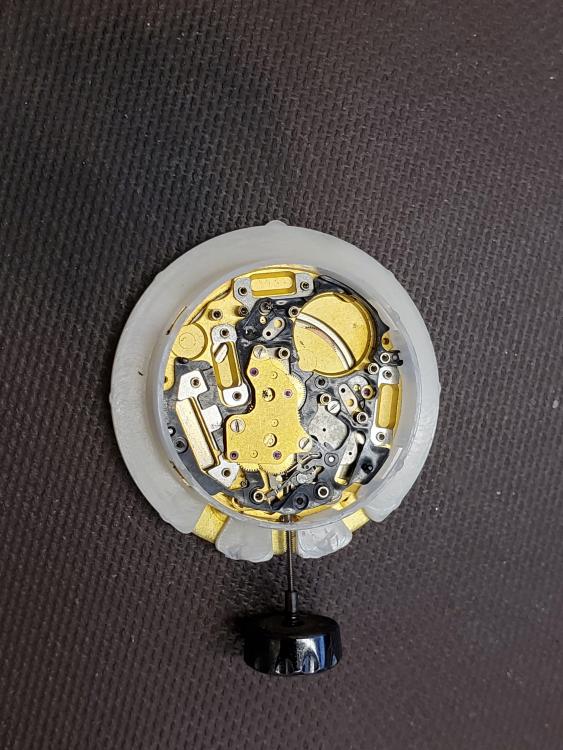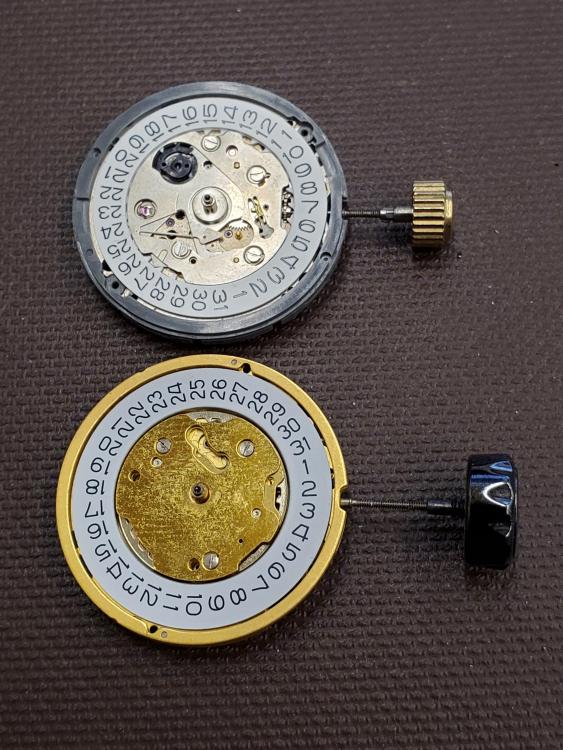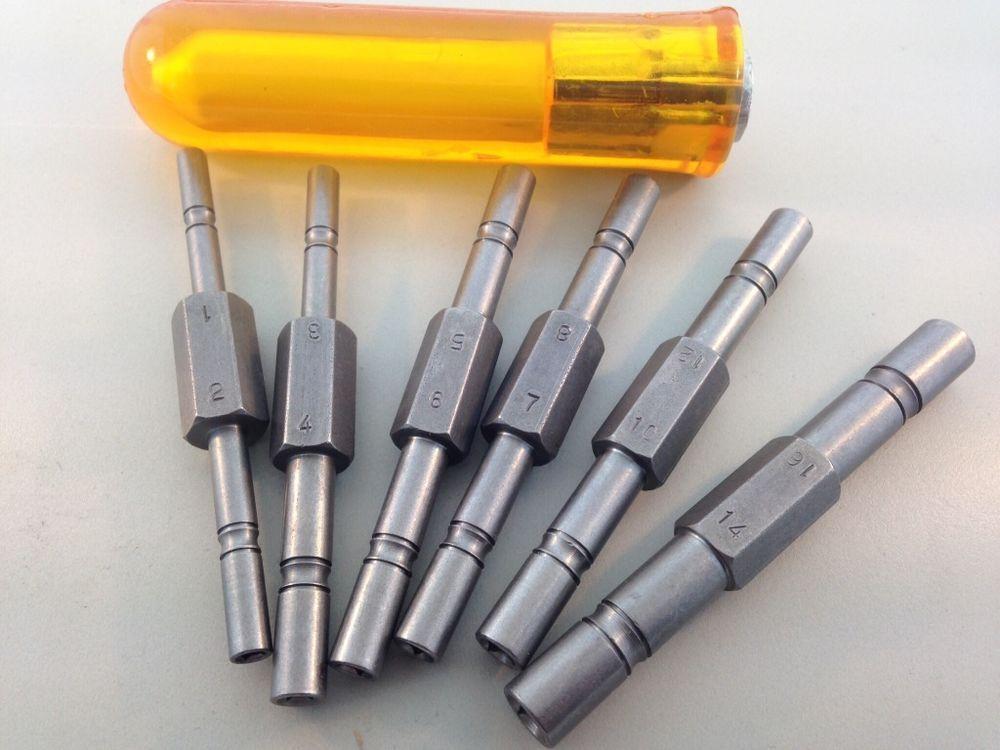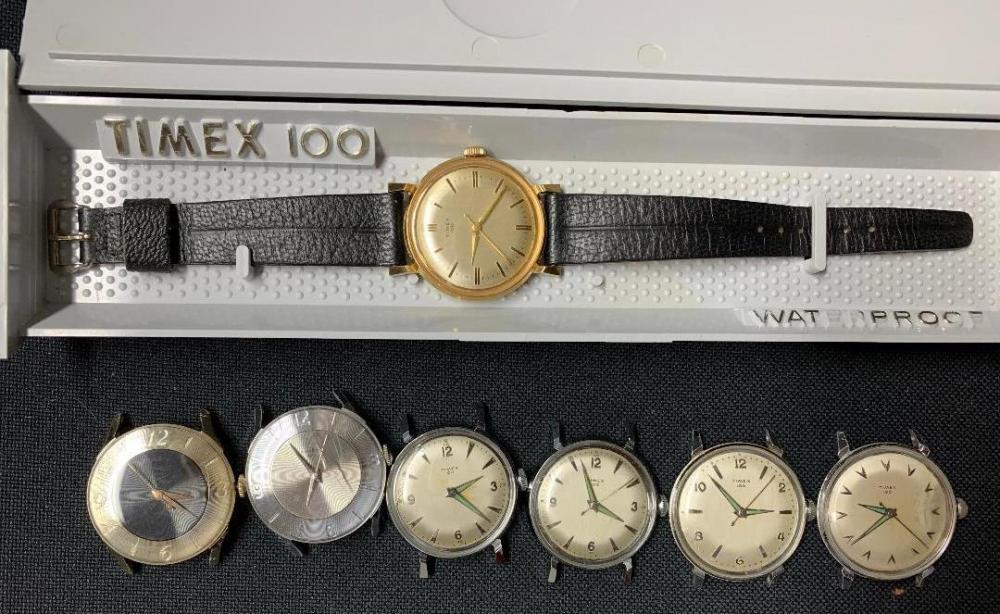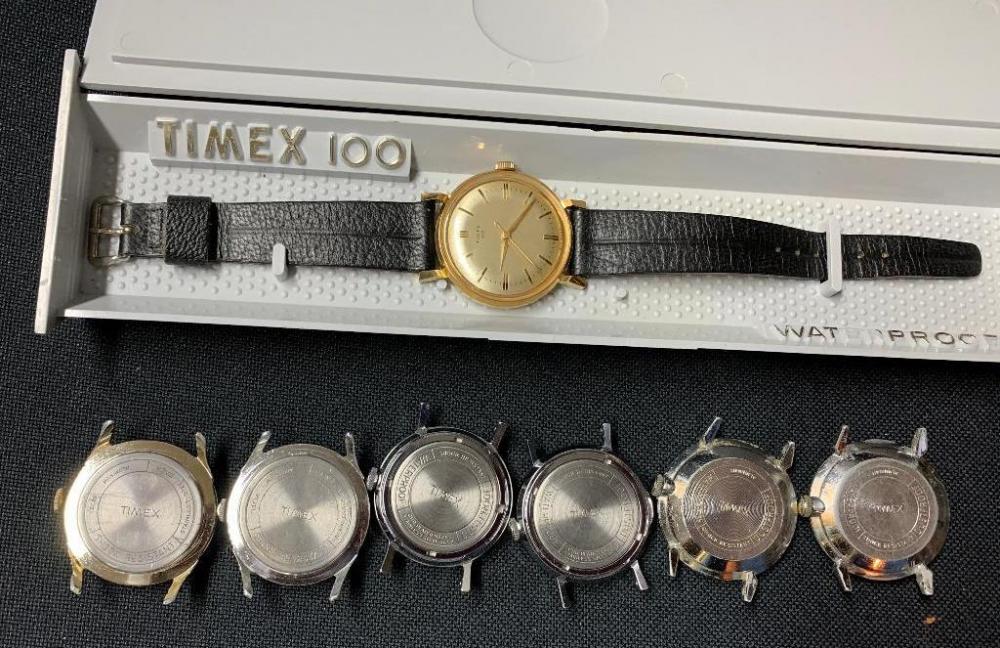Leaderboard
Popular Content
Showing content with the highest reputation on 02/08/20 in Posts
-
Was repairing a bulova diver from the 60ies I think and the rotor was loose and the watch wouldn’t run. I decided to disassemble it a bit. I removed the second plate and when I flipped it over I found that there were two screws loose on a sub-plate the pushes up on the arbor / pivot that the rotor center hole slides over. Once I tightened the two screws the arbor pushed up. I reassembled the watch and it worked perfectly. Tomorrow I clean and polish the case as well. Sent from my iPhone using Tapatalk Pro4 points
-
Hi all ,an old watchmaker friend of mine he is 76 and still goes to work as a watchmaker everyday . Imagine his knowledge .Anyway on with the topic . As you all know sometimes when you service a watch it doesn't matter what you do the amplitude would be nice another 5 or 10 degrees higher .Peter (that's his name ) told me to get an old piece of ladies watch mainspring and cut it about 2 inches long and wire it to a piece of pegwood leaving an inch hanging past the end .Get a hold of the pallet fork with a holder of some sort ,tweezers will do if your steady enough and burnish inside of the folk where the impulse jewel makes contact . This works amazingly as it polishes the inside and gives an uninterrupted smooth passing of the impulse jewel .Takes a bit of time but it works . I wanted to make videos of him doing some great stuff and upload but he won't let me Anyway give it a shot .2 points
-
My preferred method for a watch of this quality would be to try a ladies dial washer over the screw hole.2 points
-
With a cap jewel it is just the pivot tip that limits the shake, yes. No way to move the cap jewel in its setting; you do see prick marks where the cap would seat sometimes to raise it up a bit but this is not really the right way. It's possible that AS had different versions of this caliber with no cap jewels or one cap jewel; maybe they used the same escape wheel for all maybe there were different versions, I don't know. The least invasive would be a shim as mentioned above, at least no damage is done.2 points
-
That's an odd situation, especially as there's a full bridge across the train, not just a little cock. A cock can get tilted either intentionally or by accident, a bridge that size not really. There's no simple way to increase the endshake there, aside from shortening one of the pivots.2 points
-
Hi Deggsie, One problem with shimming is the darn thing goes un-noticed and gets washed away, leaving the next serviceman baffled as to how on earth did he end up with longer arbour so Gauging the keeper-plate is not frowned upon as much as main plates and is sort of permanent. Another approach is to make little bump on the keeper- plate. I don,t think Nickelsilver with all the tools abailable to him, would opt any of the above, specially on a museum piece. How about awaiting his advice.2 points
-
I picked the up the 1945 Bulova Cadet as a non-worker on eBay, then I received a parts lot that had a Westfield case and dial. Of course, I had to get a 1940 Westfield Trojan cousin movement for it. Unfortunately, I didn't notice til this morning that the replacement Westfield had a curved dial whereas my case had a flat dial and it doesn't fit. Oh well, guess I'll have to buy more watches.2 points
-
Depending on pivot shoulder it may run fine without one or both end stones. If you must keep both end stones on and make adjustment, you can push out both end stones, one may not move out adequate to free the pivot ,without falling off itself. Reinsert if it did fall out. Fitting another end stone with deeper concavity can be an option, or end stone+ spring. But shortening a pivot Sas outlined several common approaches to increase distance between end stones .2 points
-
how was it behaving before you dis-assembled it? if it was the same then it could be any number of things, wrong jewels replaced, wrong escape wheel, jewels inserted wrong, bent bridge etc. if it started after you touched it then it may be something you did, but just to understand it runs fine without cap jewels installed? Dig you peg the jewel hole and maybe accidentally push the stone too far in? you can try using penetrating oil and gently pushing the cap jewel out a bit, just make sure you re-clean them afterwards. also do you have a pic of the entire movement?2 points
-
First, are you sure that is the escape wheel binding? And that all pivots are straight? Shortening pivots is not just a non reversibile action, is also difficult to do precisely, for that reason is not recommended. For a try, you can more easily shim the pallet cap stones with a tiny piece of aluminum foil.2 points
-
I recently acquired a Citizen "box-o-parts" from the Bay. I got it because it had parts for a Citizen Jet which I need a proper case for mine. There was included several cases, dials hands, misc gears and 2 movements. When it arrived I found that one movement was a 27 jewel Jet with the automatic rotor assembly in pieces and missing the rotor weight. The other movement turned out to be a complete mid 60's 21 Jewel, Crystal seven. The balance was good and the mainspring was intact. I gave it a wind and it attempted to run. So I thoroughly cleaned it, assembled and lubed it and it took off running like a champ. I matched up a dial, hands and a complete case in the parts provided, and now, here it is on my wrist adding miles to the odometer. Yes, the crown is mismatched, but only I, and you, will know, lol.2 points
-
Hello everyone, hope you’re doing well. After swapping out a movement in a citizen automatic watch I’ve always wanted to actually tear down and restore something. So I started looking at pocket watches due to their bigger size and simplicity. My current skill level is only interest and have swapped out a movement before, changed some hands, and the case. So basically little to none. i found this Junghans pocket watch on eBay for cheap cheap. It winds and the balance wheel does move when messed with but other than that there’s no life. So I’m going to tear it down and clean it, seeing if I can catch any damage. This watch seems relatively unique for a junghans (or maybe a knock off) because I don’t see many others where the 3 o clock position sits near the crown. I’ll be keeping this thread updated as I make progress.1 point
-
1 point
-
The trick is not to remove them at all.... They are a version of Seiko's "Diafix" springs and they are designed to allow the jewel to be removed without removing the spring. What you have to do is to gently push the middle leg in towards the centre of the jewel until the tab clears the recess, then hinge it up with the two prongs still in the recess so that you can remove the cap jewel. There have been posts on here about these before, I'll see if I can find one with pictures.1 point
-
Hi all the ones you mentioned will work also Isopropyl Alchol (IPA) available on the net or at the chemist. I use carburetter cleaner or brake cleaner as the initial de greaser and finish with the IPA. I should have a look on this sire using the search box as the subject has been covered many times, and everybody has their own prefered method and cleaner. Its a case of reading whats been written and choose what you think suits your purpose.1 point
-
good show ! if you like to make tools, sacrifice a winding key and pin it into a wooden file handle. vin1 point
-
I would sludge hammer the watch or spent the equivalent of 1000 hours trying to fix it Sent from my iPhone using Tapatalk Pro1 point
-
they are about £20 a set the do get more expensive like the ones added by Old Hippy they are the best. They are the ones supplied with the Ollie Baker mainspring winder.1 point
-
In-line with @jdm's statement, This has been the very thing that has been the business model of Invicta. They place average sized yet reliable movements in enormous cases with dials that fit and look proper from the front until you see them from behind. What you see below are two Invicta watch cases and movements. The lager is a very large chronograph with a Swiss Ronda quartz movement. The smaller is an Invicta diver with a NH35A movement with Seiko heritage. The actual movements are barely a millimeter in size difference. In the final picture below, you can see the large plastic spacer ring Invicta employs to keep the movement in place and stable. So, the ultimate answer for the OP is yes, you can make anything fit in a large enough case, including a massively over-sized one with enough engineering.1 point
-
1 point
-
The Venus is actually a Seagull copy, and the watchmaker our Host Mark Lovick. Enjoy1 point
-
Hi I have had a good root round and tech data on dugena1040 or the Otero 48 seems to be in short supply. They seem pretty cheap going on ebay for around the £25 for the movement. I will keep on cruising. cheers1 point
-
Thank you, jdm! Great read. Certainly not easier. But I got into this hobby for love of "fine" work. Not saying I'll take this on, but I love the patience and craftsmanship required.1 point
-
I realise I’m not the clearest of people when describing in text... so here is a sketch I did over breakfast which hopefully clarifies the setup. I think it’s typical for 1000’s of movement types. With both end stone keepers screwed in, the stones compress onto the tips of the escape wheel pivot causing it to bind Sent from my iPhone using Tapatalk1 point
-
Dial making.. not the easier task https://www.watchuseek.com/glashutte-original-dial-manufacturing-process/1 point
-
Yes the gum is the 'glue' to hold the enamel on the metal until it is fired. Go look up a enameling supplier and you will find they sell a premixed gum that you can use which is easier than making your own. You can also buy preground enamel rather than having to grind your own which just requires washing with distilled water. Years ago I played around a bit with enameling to make some jewelry for my wife. To do enameling well isn't easy and for something as large as a watch dial you really need a kiln to heat it evenly and to allow it to cool gradually so the enamel does not crack. You also need to enamel both sides of the dial to even the stress out, for the back sides most enamelers save their waste enamel, that is bits that missed what they are enameling when sifting it on that has mixed with other colours. Not much modern written material on enameling watch dials, but lots on enameling jewelry which would give you a good place to start.1 point
-
1 point
-
1 point
-
1 point
-
Hi ,that looks like to me a one jewelled version of the cattin 66 ,a popular 17 jewelled french movement of the era in a lot of dive watches from Mortima . I would say the click spring off a cattin 66 will fit your watch1 point
-
OK so the movement is made by Cattin, and looks to be a caliber C66-CLD (but a C66 will be just fine as it's the same thing without the date). The part is #434 click spring. Unfortunately both Cousins and Borel list that part as obsolete, which means they don't have it. There is a complete movement currently on eBay here and it looks like these movements were often to be found in Mortima watches so it's worth looking out for a scrapper to see if you can salvage the part you need. Happy hunting1 point
-
1 point
-
As mentioned above, I don't think this watch has a removable back. It's a classic front loader.1 point
-
With the bezel removed, if you can,t just lift the movement and stem out, You best put the bezel back on and remove the stem first. It would have to be a two piece stem. You put the bezel back on to protect the dial. To remove the stem, pull it out to set position, insert your tweezers in between the case and the crown, crack the crown( stem attached) out. You may use nippers to just pull the stem+ crown out.1 point
-
1 point
-
You can't, because it's not dirt, is either oxidation or chemical turning of the paint. As soon you get to touch you can only make it worse, not to say that is any good now. BTW, we have a section of the forum where it's considered polite for new members to introduce themselves.1 point
-
1 point
-
1 point
-
1 point






